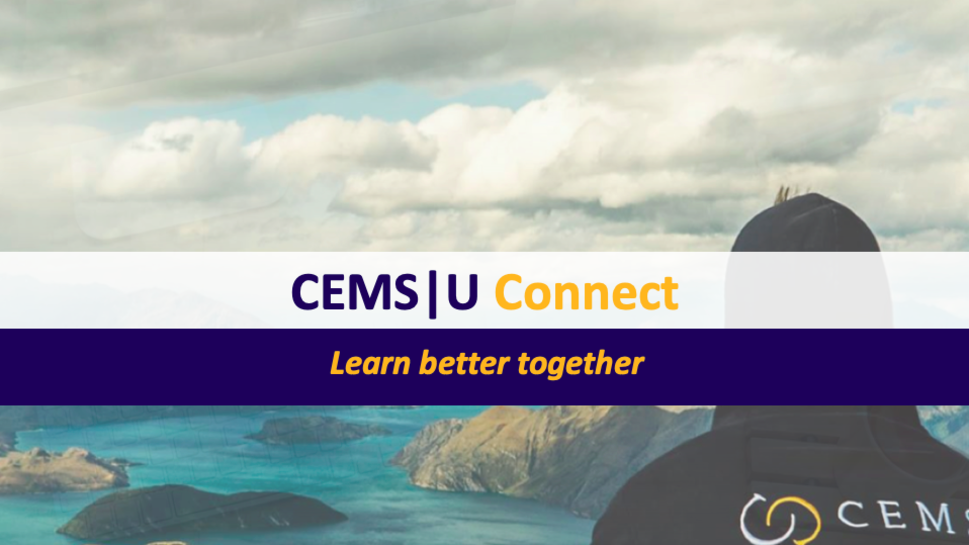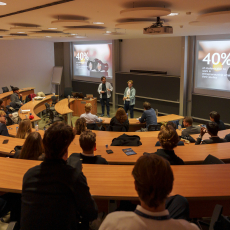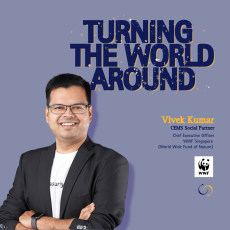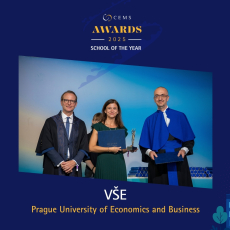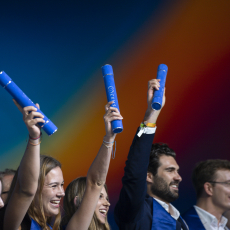Ask any CEMS student, alum or Corporate Partner and they will likely tell you the same thing: the CEMS community is unique. It convenes educators, game-changing organisations, decision-makers and next-generation leaders from all over the globe around the pursuit of knowledge, ideas and solutions that have the potential to reshape business – for the long term, and for the greater good.
This is the challenge behind The CEMS Hackathon, bringing together diverse teams of students and practitioners from across the globe. The winner of the challenge is CEMS|U Connect, a proposition for a platform that uses AI to match users based on shared interests and offering them different ways to connect and learn in real time.
The idea is simple, says Mackenzie Arnold of the winning team:
“CEMS U Connect basically leverages what CEMS already has, which is an amazing and diverse global community, and enables them to connect around shared interests. What it has in common with, other clubhouse mediums like LinkedIn is the community-driven learning component. But what makes it different is that it identifies connections and commonalities in people’s life interests – rather than shared connections or simple “likes” – and it offers multiple learning modes that map to different styles or preferences for learning.”
Leveraging a “safe space” to connect and learn
Creating CEMS U Connect, says Mackenzie, took months of researching CEMS members’ needs and challenges, and deploying the mechanisms of design thinking to create and prototype solutions, mapping to the specifics of these needs. Their research shed light on roadblocks keeping different groups within the CEMS community from connecting more.
“We surveyed and talked to different stakeholders to understand their perspectives. What we unearthed is that for CEMS globally there is the over-arching challenge of how to best leverage a community that is so dispersed and create meaningful opportunities. Alumni invariably agree that CEMS has given them this cool life experience, but that it’s easy to lose touch and hard to re-engage. For partners, the CEMS experience can be uneven in terms of visibility – some partners don’t enjoy the same traction as larger, longer-established organisations. Meanwhile, students are fully engaged with learning, but have less experience and understanding when it comes to building their network.”
What all these diverse groups have in common within CEMS, however, is a “safe space to share”.
“We reasoned that giving users the functionality of finding a topic or idea that resonated most with them and being able to proactively connect with others around that topic, we could eliminate some of these barriers easily while tapping into the sharing dynamic that already exists within CEMS.”
Different modes of learning
Then there was the question of learning styles. The team dedicated time and research to understanding how different individuals learn and were keen to incorporate this into the solution.
Some of us learn by doing, so we wanted to integrate things like skills workshops. Others prefer to research, so that meant designing a resources management tool to house things like podcasts, videos or features.
The journey from ideation to building the actual prototype took around two months, says Mackenzie. During that time the team worked together, delving into the “nitty gritty” of their solution and creating a video that not only showcased it, but recounted the story of its development.
“Part of the work involved a coaching session with a CEMS alumnus who really made us think deeper about the problems we were addressing and how the solution could recreate the CEMS experience in a sense. He asked us to imagine sitting in a bar with a CEMS alum who wanted to know why he or she should care about CEMS U Connect. That forced us to really think inside the solution and inspired us to integrate more story-telling around how we developed it.
Finding power in diversity
CEMS U Connect won the Hackathon, she says, because of its “uniqueness” but also because of the team’s capacity to articulate what they wanted to achieve with clarity and simplicity. They were also empowered by an ability to leverage the different skills and attributes that each team member brought to the process – finding power in diversity, says Mackenzie, that very much reflects the CEMS experience itself.
“Each of us delivered something unique, from energy and positivity to organisational skills to creativity to big-picture thinking and a capacity to align our thinking around ideas and purpose. We found the way to work really well together as a four-person team in different regions and countries.”
CEMS U Connect was presented to the CEMS Management Council earlier this month who will look at the possibilities of further development, integration and implementation going forward. The team would be “delighted” to see their project advance, says Mackenzie, not least because the whole experience connects with their passion for life-long learning and the future of work.
“The hackathon has been both exciting and humbling. It’s given us a chance to really delve into a topic that inspires us – a topic that is so deeply supported and championed by CEMS – while giving us exposure to a diversity of interesting people. The experience itself reminded me of my internship in consultancy; you get a very real sense of the challenges, and the difficulties in designing and then implementing something, so it’s a reality check. It’s also a chance to work with awesome people and to learn a lot yourself. In a way, the hackathon was our own little journey in life-long learning.”
